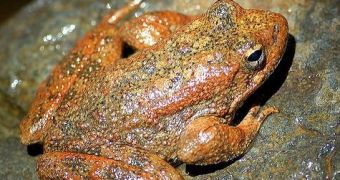Not many people know this, but quite a lot of amphibian species have gone extinct throughout the past few decades.
More precisely, studies concerning biodiversity argue that, in just 30 years, about 120 kinds of amphibians have fallen off the map, not to mention that 41% of those that made it up until nowadays are in serious danger of becoming extinct.
The good news is that, just recently, biologists happened to come across a rather interesting bacteria which typically carries on with its business on the red-backed salamander.
Apparently, this bacteria keeps the latter from catching a disease “officially” known as chytridiomycosis.
In plain words, said disease is caused by a very special type of fungus, and is responsible for disturbing the flow of various vital chemical compounds across the skin of amphibians, therefore causing them to suffer from fatal heart failures.
Since the loss of so many amphibian species is attributed by most environmentalists and researcher to the afore-mentioned fungus, it is now believed that, in order to rescue frogs worldwide, efforts must be made to fight back chytridiomycosis and its root cause.
Mongabay informs us that, in the light if these new pieces of information, an experiment is presently carried out in Kings Canyon National Park, US.
Thus, tadpoles of the mountain yellow-legged frog are pretty much “drenched” in the anti-fungal bacteria found to live on the red-backed salamander.
This operation is carried out by pouring the frog-friendly bacteria into high altitude lakes, which are supposed to represent the yellow-legged frog's natural habitat.
The same source informs us that these endangered frogs and their tadpoles are to be checked on some time after this innovative treatment is administered, in order to see how well they are doing and whether or not there has been some improvement in their headcount.
From where we stand, it is a good thing that due consideration is now given to species that more often than not do not receive the media attention they deserve and therefore do not take center stage as far as conservation efforts go.

 14 DAY TRIAL //
14 DAY TRIAL //